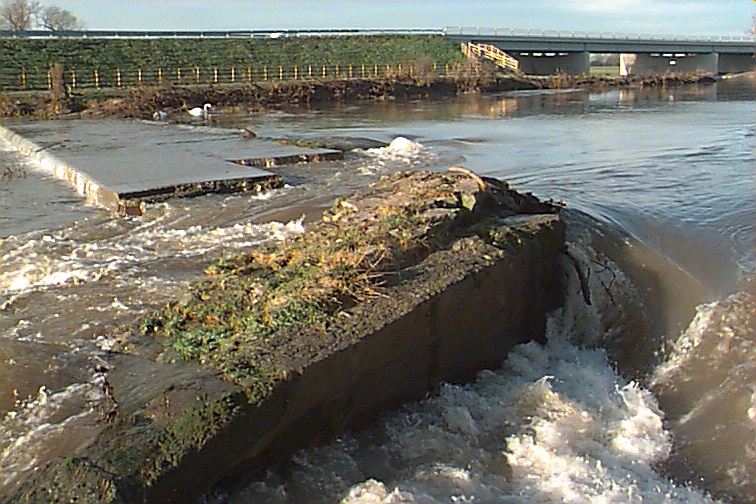|
|
|
BRANSFORD BRIDGE
S0804533
Birth place of WuIstan de Bransford who became Bishop of Worcester (1338-49). In
1338 he built a bridge across the Teme. John Ogilby (1600-1676), the map maker
records a wooden bridge over the Teme at Bransford. This was probably the bridge
which was destroyed by the Scottish army in 1651. By the I9th century a bridge
with brick piers and three arches crossed the Teme. This was replaced in 1936
with a single span concrete structure just upstream of the old bridge. The old
pier bases and the abutments are still visible. At Bransford there was a Corn
mill and a Snuff Mill. The Fox Inn is next to the bridge and often becomes
surrounded by flood water.
BRANSFORD RAIL BRIDGE S0814532
Carrying the main railway from London to Hereford and built about 1870. The
river forms a natural weir under the bridge and has a deep pool below.
POWICK POWER STATION S0834525
Worcester City Corporation bought the old mill on the Teme at Powick to convert
it into a hydro electric power station. When completed in 1894, it was the first
large scale hydro-electric power station in the world. The station operated
using four water driven turbines and three steam engines. There is a plaque on
the building commemorating the date. It soon became inadequate to meet the needs
of the City and a new station was built on the Severn at Hylton Road, Worcester.
The station at Powick was still operating in the 1950s. The building later
became a laundry, this closed in the 1970s.It is now undergoing repair and
conversion into apartments as part of a millennium project.
 |
| Weir on the Teme at Powick after heavy rain. Weir redirects partial flow of river to mill stream feeding power station. | Weir in quieter times, showing galvanised steel 'Salmon tanks' and sad state of disrepair. Now rebuilt by River Authority who removed tanks. |
POWICK OLD BRIDGE S0834525
Built of sandstone in the 15th century, it has three segmental skew arches
across the Teme and two across the Laugherne brook. There are records of a
bridge across the Teme at 'Wyke by Worcester' in 1336. The bridge was considered
to be in decay in 1633, but must have been repaired soon after. On the 26th
September 1642, it was the scene of the first skirmish of the first battle of
Worcester during the Civil War. It also played a major part in the last battle
of Worcester on the 3rd September 1651.
POWICK A449 BRIDGE S0836524
An iron single span structure on sandstone flood arches, Built in 1837 to bypass
the old bridge. It has a coat-of-arms in the middle of the span.
POWICK CHURCH S0834515
The church of St. Peter and St. Lawrence dates from the 12th century, but of
that period only the walls of the north and south transepts date from then. The
chancel was lengthened during the 13th century with the tower being added in the
15th century. Because of its location, on a high ridge overlooking the lower
Teme and Worcester City, it was used as an observation post by Cromwell's
gunners during the battle of Worcester. The marks made by muskets balls are
still visible on the tower walls.
TEME MOUTH S0851523
The Teme enters the Severn approximately one mile below Worcester City bridge.
There is a footpath leading to the confluence from the old Powick bridge. It can
also be viewed from off the Southern Link (A422) road bridge. In winter the
whole of the confluence area is subject to regular flooding, and can be quite
spectacular when viewed off this bridge